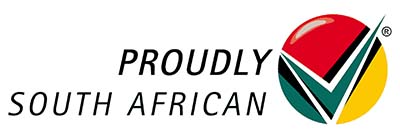In today’s competitive business environment, reducing operational costs is essential for long-term profitability and sustainability.
Business process optimization (BPO) is a powerful approach that enables companies to streamline workflows, eliminate inefficiencies, and achieve significant cost savings.
By focusing on improving each process, businesses can make incremental adjustments that lead to substantial reductions in expenses.
In this post, we’ll explore the benefits of BPO for cost reduction, key areas for optimization, and actionable steps to implement BPO effectively.
Understanding Business Process Optimization (BPO)
Business process optimization involves evaluating, refining, and improving business processes to increase efficiency and reduce waste.
Unlike general process improvement, which may focus on gradual enhancements, BPO is often driven by a clear objective—such as cost reduction.
By analyzing workflows and eliminating unnecessary steps, companies can reduce labor, material, and overhead costs.
Common areas for BPO include manufacturing, sales, customer service, and supply chain management, though BPO can be applied to almost any part of a business.
The goal is to create streamlined processes that enhance productivity and reduce operational costs.
Benefits of Business Process Optimization for Cost Reduction
a. Lower Operational Costs
One of the primary benefits of BPO is reducing operational costs.
By eliminating redundant tasks, automating repetitive processes, and reallocating resources, businesses can reduce expenses across the board.
Example: A company that automates its invoicing process can reduce the time and labor associated with manual data entry, lowering administrative costs.
b. Increased Efficiency and Productivity
Optimized processes lead to faster task completion and higher productivity.
Employees can focus on high-value activities, leading to improved output and greater overall efficiency.
c. Enhanced Quality and Consistency
BPO can improve the consistency and quality of output, reducing costly errors and rework.
By standardizing workflows, companies can ensure that tasks are performed consistently, leading to a higher quality of service or product.
d. Improved Resource Utilization
BPO helps allocate resources like equipment, materials, and labor more effectively, reducing waste and ensuring assets are used to their full potential.
Key Areas for Business Process Optimization to Achieve Cost Reduction
a. Workflow Automation
Automating repetitive tasks is a cornerstone of BPO for cost reduction. By using automation tools, companies can reduce the need for manual labor, cut down on errors, and speed up workflows.
b. Supply Chain and Inventory Management
An optimized supply chain reduces costs by minimizing waste and ensuring efficient resource allocation.
By implementing strategies like just-in-time inventory and demand forecasting, businesses can avoid overstocking and lower holding costs.
c. Customer Service Optimization
Improving customer service processes not only enhances customer satisfaction but also reduces costs associated with handling complaints and support issues.
Implementing self-service options and streamlined ticketing systems can lower the cost of customer support.
Example: A company that offers a self-service portal for customers can reduce the volume of calls and emails to their support team, cutting down on labor costs.
d. Employee Training and Development
Investing in employee training improves productivity and reduces error-related costs. Cross-training employees can create a flexible workforce capable of covering multiple roles, which can improve resource utilization and efficiency.
Steps for Implementing Business Process Optimization for Cost Reduction
a. Analyze Current Processes and Identify Pain Points
The first step in BPO is to evaluate current workflows and identify bottlenecks or inefficiencies.
Mapping out each process helps highlight areas where improvements can be made, such as redundant steps, long wait times, or excessive costs.
b. Set Clear Goals and Key Performance Indicators (KPIs)
Setting specific cost-reduction goals and KPIs is crucial for measuring the success of optimization efforts.
Define metrics that reflect cost savings, productivity improvements, and quality enhancements.
c. Streamline and Simplify Processes
After identifying inefficiencies, work to simplify workflows by eliminating unnecessary steps and focusing on value-added activities.
Techniques like Lean and Six Sigma can help identify process waste and establish streamlined workflows.
d. Implement Technology and Automation Tools
Choosing the right technology is essential for effective BPO.
Automation tools such as enterprise resource planning (ERP) systems, customer relationship management (CRM) software, and task automation platforms help standardize workflows and increase productivity.
e. Monitor, Adjust, and Optimize Continuously
BPO is an ongoing effort. Regularly track KPIs, analyze the results of implemented changes, and make adjustments as needed to ensure processes remain efficient and cost-effective.
Best Practices for Successful Business Process Optimization
a. Foster a Culture of Continuous Improvement
Creating a culture of continuous improvement encourages employees to identify inefficiencies and suggest process improvements, leading to ongoing cost savings and better performance.
Tip: Hold regular improvement meetings and reward employees who contribute ideas for efficiency improvements.
b. Focus on High-Impact Areas First
Prioritize optimization efforts in areas with the highest potential for cost savings. This approach allows businesses to achieve quick wins and demonstrate the value of BPO early on.
c. Involve Employees in the Optimization Process
Involving employees in BPO ensures that those who perform tasks daily can provide valuable insights into workflow improvements. Employee buy-in also increases the likelihood of successful implementation.
d. Use Data to Guide Decisions and Measure Success
Data is crucial for informed decision-making and measuring the success of BPO efforts.
Tracking performance metrics provides insight into how well processes are optimized and identifies additional improvement opportunities.
Common Challenges in Business Process Optimization and How to Overcome Them
- Resistance to Change: Employees may resist changes in established workflows. To address this, implement change management practices, communicate the benefits of BPO, and involve employees in decision-making.
- Limited Resources: Budget constraints can limit BPO efforts. Focusing on small, impactful changes and prioritizing high-cost areas first can help maximize the available budget.
- Data Overload: Too much data can overwhelm decision-makers. Focus on key performance indicators relevant to cost reduction and process efficiency to avoid data overload.
By addressing these challenges proactively, companies can improve their chances of successful BPO implementation and achieve meaningful cost reductions.
Conclusion
Business process optimization is a strategic approach that helps businesses streamline operations, reduce costs, and improve overall efficiency.
By analyzing and refining workflows, companies can cut down on expenses while enhancing productivity and quality.
BPO should be an ongoing effort, with regular evaluations and adjustments to maintain optimized processes.
Starting small and expanding optimization efforts over time can yield significant, long-term benefits.








